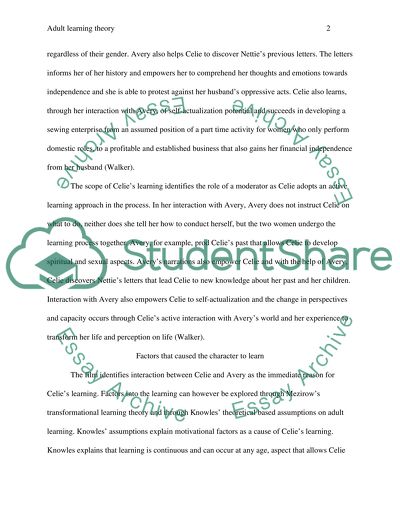Cite this document
(“The Color Purple. Applying Adult Learning Theory Through Character Assignment”, n.d.)
The Color Purple. Applying Adult Learning Theory Through Character Assignment. Retrieved from https://studentshare.org/education/1484327-the-color-purple-applying-adult-learning-theory-through-character-analysis
The Color Purple. Applying Adult Learning Theory Through Character Assignment. Retrieved from https://studentshare.org/education/1484327-the-color-purple-applying-adult-learning-theory-through-character-analysis
(The Color Purple. Applying Adult Learning Theory Through Character Assignment)
The Color Purple. Applying Adult Learning Theory Through Character Assignment. https://studentshare.org/education/1484327-the-color-purple-applying-adult-learning-theory-through-character-analysis.
The Color Purple. Applying Adult Learning Theory Through Character Assignment. https://studentshare.org/education/1484327-the-color-purple-applying-adult-learning-theory-through-character-analysis.
“The Color Purple. Applying Adult Learning Theory Through Character Assignment”, n.d. https://studentshare.org/education/1484327-the-color-purple-applying-adult-learning-theory-through-character-analysis.


